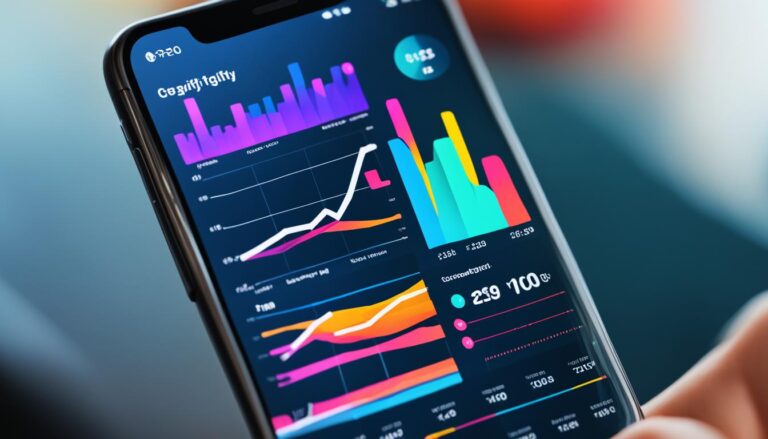Boost Your Office Productivity Today!

Are you tired of feeling overwhelmed and underproductive at work? Do you constantly feel like you’re drowning in tasks and struggling to stay organized? It’s time to take control and revitalize your productivity in the office. By implementing effective strategies to improve your efficiency, time management, organization skills, task prioritization, and workflow optimization, you can transform your workday and achieve remarkable results. Are you ready to unlock your full potential and excel in your professional endeavors?
Key Takeaways:
- Enhancing office productivity is achievable with the right strategies
- Improving time management, organization skills, and task prioritization are essential for productivity
- Understanding your biological prime time can help you allocate your work effectively
- Task prioritization and minimizing distractions play a critical role in productivity
- An optimized workspace and a healthy work-life balance contribute to increased productivity
Find Your Biological Prime Time
Did you know that your productivity and energy levels fluctuate throughout the day? These variations are influenced by your ultradian rhythms, natural cycles that affect your focus and motivation. To unlock your full potential and optimize your productivity, it’s crucial to identify your biological prime time – the periods when you feel most energized and “in the zone”.
To understand your biological prime time, start by keeping a journal. Note your energy levels and productivity at different times of the day for a few weeks. Pay attention to when you feel most alert, motivated, and able to tackle complex tasks effortlessly.
Discovering your biological prime time is like finding a hidden treasure. It’s the key to maximizing your focus, productivity, and overall performance.
Once you’ve identified your golden hours, you can align your work accordingly. Schedule your most challenging and demanding tasks during your biological prime time, when your focus and energy levels are naturally at their peak. This way, you can make the most of your heightened capabilities and accomplish your goals more efficiently.
On the other hand, during periods when your energy levels naturally dip, save less demanding and routine tasks for those moments. By capitalizing on these downturns, you can ensure a more balanced and effective approach to your work. Remember, it’s important to prioritize self-care and avoid burning out by working at maximum intensity all the time.
Understanding your biological prime time empowers you to work smarter, not harder. It’s all about optimizing your workflow and capitalizing on your natural rhythms to achieve exceptional results.
Remember, everyone’s biological prime time is different, so what works for others might not work for you. Dedicate some time to experimenting and discovering your ideal rhythm. With practice and awareness, you can unlock the power of your biological prime time and harness it to reach new heights of productivity and success.
Prioritize Your Tasks
When it comes to managing your workload, task prioritization is key. Instead of overwhelming yourself with a long to-do list, focus on choosing between five and nine high-priority tasks each day. By adopting this approach, known as “The Magical Number Seven, Plus or Minus Two,” you can prevent setting unrealistic expectations and feeling disappointed at the end of the day. Prioritizing your tasks effectively ensures that your most important responsibilities receive adequate attention, leading to increased productivity.
There are several strategies you can utilize to prioritize your tasks and maximize your productivity:
- The Eisenhower Matrix: This powerful tool helps you categorize tasks based on their urgency and importance. Divide your workload into four quadrants: urgent and important, important but not urgent, urgent but not important, and neither urgent nor important. This matrix allows you to allocate your time and energy efficiently, focusing on the tasks that truly matter.
- The 1-3-5 Rule: This method enables you to prioritize tasks by selecting one big task, three medium tasks, and five small tasks for each day. By focusing on a few key goals, you can ensure that you’re making progress on important projects while still accomplishing smaller, but necessary, tasks.
Implementing these task prioritization methods will help you stay organized, meet deadlines, and make the most of your time. Let’s take a look at an example of an Eisenhower Matrix:
| Urgent | Not Urgent | |
|---|---|---|
| Important | Complete financial report | Schedule team meeting |
| Not Important | Respond to urgent email | Read professional development book |

In the example above, the financial report takes precedence as it is both urgent and important. The team meeting can be scheduled as it is important but not urgent. Responding to the urgent email can be done quickly, while reading the professional development book can be postponed as it is neither urgent nor important.
By following these task prioritization techniques, you can enhance your focus, manage your workload effectively, and achieve greater productivity in your professional life.
Minimize Distractions
Distractions can significantly hinder your productivity, both self-imposed distractions like notifications from devices and environment-imposed distractions like interruptions from colleagues. While it may not be possible to eliminate all distractions completely, you can take steps to reduce their impact.
- Close out email tabs to avoid being constantly pulled away from your work by incoming messages.
- Switch your devices to “do not disturb” mode during focused work sessions to limit notifications.
- Use browser blockers or website blockers to prevent access to time-wasting sites while you’re working.
- Wear headphones to block out environmental distractions, allowing you to maintain focus and concentration.
Distraction Minimization Techniques
To help you minimize distractions, here are some practical techniques:
- Time-blocking: Schedule specific blocks of time for uninterrupted work, minimizing the chances of being distracted.
- Batching: Group similar tasks together and work on them consecutively to maintain focus and avoid task-switching distractions.
- Establish boundaries: Communicate your need for uninterrupted work time to colleagues, setting clear expectations about when you are available for conversations.
- Designate a distraction-free zone: Create a dedicated workspace where you can minimize interruptions and immerse yourself in deep work.
By implementing these strategies, you can minimize distractions and create an environment that promotes focus and concentration.
Distraction Minimization Techniques Comparison Table
| Technique | Description |
|---|---|
| Time-blocking | Schedule specific blocks of time for uninterrupted work, reducing the chances of being distracted. |
| Batching | Group similar tasks together and work on them consecutively to maintain focus and minimize task-switching distractions. |
| Establish boundaries | Communicate your need for uninterrupted work time to colleagues, setting clear expectations about when you are available for conversations. |
| Designate a distraction-free zone | Create a dedicated workspace where you can minimize interruptions and immerse yourself in deep work. |
You can refer to the comparison table above to gain a better understanding of how each distraction minimization technique can benefit your productivity.

Avoid Multitasking
Contrary to popular belief, multitasking is not an effective strategy for productivity. The human brain is not capable of truly multitasking; instead, it switches rapidly between different tasks, which interrupts focus and reduces efficiency. To maximize your productivity, it is important to adopt a systematic approach that allows you to concentrate on one task at a time.
One technique that can help you stay focused and on track is external self-talk. By verbally stating the task you are currently focusing on, you create a clear mental boundary and improve your behavior. This simple practice enhances your ability to prioritize and complete tasks efficiently.
Another strategy to avoid the pitfalls of multitasking is grouping similar tasks together and using time blocking to allocate specific time slots for different types of work. This approach allows you to maintain your concentration and prevents constant task switching, which can be disruptive and hinder your progress.
By adopting a systematic approach to task management and avoiding multitasking, you can optimize your productivity and achieve better results.
Benefits of Avoiding Multitasking
- Enhanced focus and concentration
- Improved task prioritization
- Reduced mental fatigue
- Increased efficiency and productivity
- Better quality of work
Multitasking vs. Systematic Approach
| Multitasking | Systematic Approach |
|---|---|
| Result in decreased productivity | Maximizes productivity and efficiency |
| Impacts concentration and attention span | Enhances focus and concentration |
| Distracts from important tasks | Allows for better task prioritization |
| Increases stress levels | Reduces mental fatigue and stress |

Optimize Your Workspace
Your workspace plays a crucial role in your productivity. By investing in ergonomic accessories, such as chairs, cushions, and wrist rests, you can support your body and reduce physical strain. Positioning your desk near a window to maximize natural light can also boost your work performance. Adding plants to your workspace has been shown to reduce stress and increase productivity. Additionally, utilizing productivity tools like password managers, templates, and centralized project management platforms can save time and improve efficiency. Consider periodically changing your workspace environment to stimulate your brain and increase motivation.

Conclusion
Improving office productivity is a journey that requires dedication and the right strategies. By implementing the tips and techniques mentioned above, you can enhance your efficiency and achieve remarkable results. Focus on finding your biological prime time, prioritizing tasks effectively, minimizing distractions, avoiding multitasking, optimizing your workspace, and taking care of your overall well-being.
Remember, productivity is not just about working harder; it’s also about working smarter and maintaining a healthy work-life balance. By finding the right balance between your professional and personal life, you can unlock your full potential and excel in your professional endeavors.
Take the time to implement these productivity tips and make them a part of your daily routine. With persistence and a proactive mindset, you will see significant improvements in your office productivity and overall job satisfaction. Start today and reap the benefits of a more productive, fulfilling work life.
FAQ
How can I boost my office productivity?
To boost your office productivity, you can improve your time management, organization skills, task prioritization, and workflow optimization. Additionally, utilizing productivity tools and implementing strategies for remote work productivity and team collaboration can also enhance your efficiency. It’s important to maintain a healthy work-life balance as well.
How can I find my biological prime time?
You can find your biological prime time by keeping a journal and noting your energy levels over time. This will help you identify the periods of the day when you feel most energized and focused. By scheduling complex tasks during these peak hours and saving less demanding tasks for when you feel less energized, you can optimize your productivity.
What is the best way to prioritize tasks?
Instead of overwhelming yourself with a long to-do list, it’s best to choose between five and nine high-priority tasks each day. This approach, known as “The Magical Number Seven, Plus or Minus Two,” helps prevent setting unrealistic expectations. You can also utilize strategies like the Eisenhower Matrix or the 1-3-5 rule to effectively prioritize your tasks.
How can I minimize distractions at work?
While it may not be possible to eliminate all distractions completely, you can take steps to reduce their impact. This includes closing out email tabs, switching devices to “do not disturb” mode, using browser blockers to avoid time-wasting sites, and using headphones to block out environmental distractions. Minimizing distractions will help you maintain focus and concentration on your work.
Is multitasking an effective strategy for productivity?
No, multitasking is not an effective strategy for productivity. The human brain is not capable of truly multitasking; instead, it switches rapidly between different tasks, which interrupts focus and reduces efficiency. To combat this, try external self-talk, where you verbally state the task you are focusing on. Additionally, consider batching similar tasks together and using time blocking to allocate specific time slots for different types of work.
How can I optimize my workspace for productivity?
To optimize your workspace for productivity, invest in ergonomic accessories like chairs, cushions, and wrist rests to support your body and reduce physical strain. Position your desk near a window to maximize natural light, which can boost your work performance. Adding plants to your workspace has also been shown to reduce stress and increase productivity. Utilizing productivity tools like password managers, templates, and centralized project management platforms can further save time and improve efficiency.
What is the key to achieving office productivity?
The key to achieving office productivity is a combination of factors. By implementing effective time management, organization skills, task prioritization, and workflow optimization strategies, you can boost your efficiency. It’s also crucial to minimize distractions, avoid multitasking, optimize your workspace, and maintain a healthy work-life balance. By dedicating yourself to these practices, you can unlock your full potential and excel in your professional endeavors.






